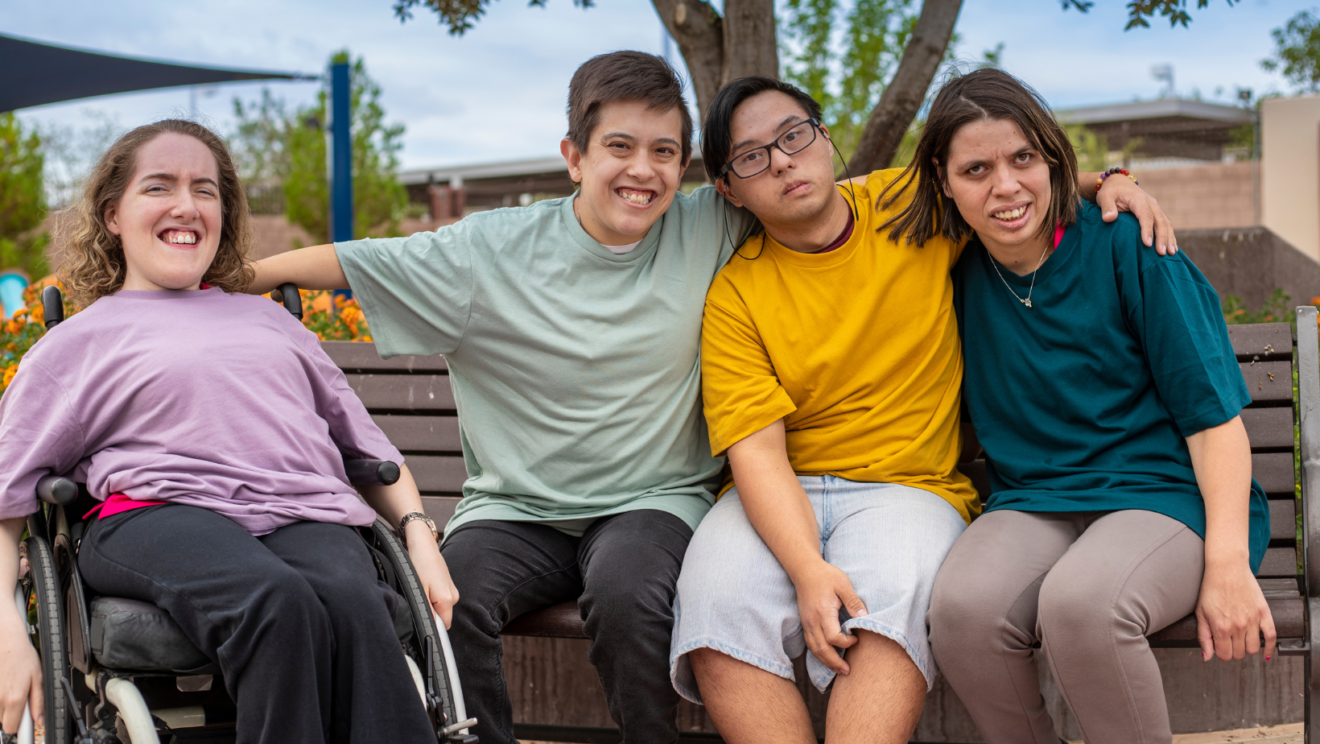
Social model of disability
People with disability aren’t the problem – we’re the solution.
There have been many models used to understand disability over time. Here at PWDA, we use the Social Model of Disability to inform how we work to advance and protect the rights, health and wellbeing of people with disability.
Social model of disability
According to the social model, ‘disability’ is socially constructed.
The social model of disability contrasts with what is called the medical model of disability.
According to the medical model, ‘disability’ is a health condition dealt with by medical professionals. People with disability are thought to be different to ‘what is normal’ or abnormal. ‘Disability’ is seen ‘to be a problem of the individual.
From the medical model, a person with disability is in need of being fixed or cured. From this point of view, disability is a tragedy and people with disability are to be pitied. The medical model of disability is all about what a person cannot do and cannot be.
The social model sees ‘disability’ is the result of the interaction between people living with impairments and an environment filled with physical, attitudinal, communication and social barriers. It therefore carries the implication that the physical, attitudinal, communication and social environment must change to enable people living with impairments to participate in society on an equal basis with others.
A social model perspective does not deny the reality of impairment nor its impact on the individual. However, it does challenge the physical, attitudinal, communication and social environment to accommodate impairment as an expected incident of human diversity.

The social model seeks to change society in order to accommodate people living with impairment. It does not seek to change persons with impairment to accommodate society. It supports the view that people with disability have a right to be fully participating citizens on an equal basis with others.
The social model of disability is now the internationally recognised way to view and address ‘disability’. The United Nations Convention on the Rights of Persons with Disabilities (CRPD) marks the official paradigm shift in attitudes towards people with disability and approaches to disability concerns.
People with disability are not “objects” of charity, medical treatment and social protection but “subjects” with rights, capable of claiming those rights, able to make decisions for their own lives based on their free and informed consent and be active members of society.
In this context:
- Impairment is a medical condition that leads to disability.
- Disability is the result of the interaction between people living with impairments and barriers in the physical, attitudinal, communication and social environment. For example, it is not the inability to walk that keeps a person from entering a building by themselves, but the stairs that are inaccessible to them.
Do you live with disability? Click here to sign up a full PWDA membership for free.
Ends | Contact us
Videos and accessible media
Auslan video
Audio description
Related content
Get involved
Become a member: Sign up now. It’s free!
Make a donation: Giving feels great!
Get our latest news: Straight to your inbox!

![PWDA-Services-5 - People with Disability Australia [IMAGE white line icon of three people]](/wp-content/uploads/2022/04/PWDA-Services-5-1320x743.png)
![PWDA-Services-8 - People with Disability Australia [IMAGE white line icon of a heart shape with a dollar sign in the centre]](/wp-content/uploads/2022/04/PWDA-Services-8-1320x743.png)
![PWDA-Services-6 - People with Disability Australia [IMAGE white line icon of newsletter with the word News in block letters]](/wp-content/uploads/2022/04/PWDA-Services-6-1320x743.png)